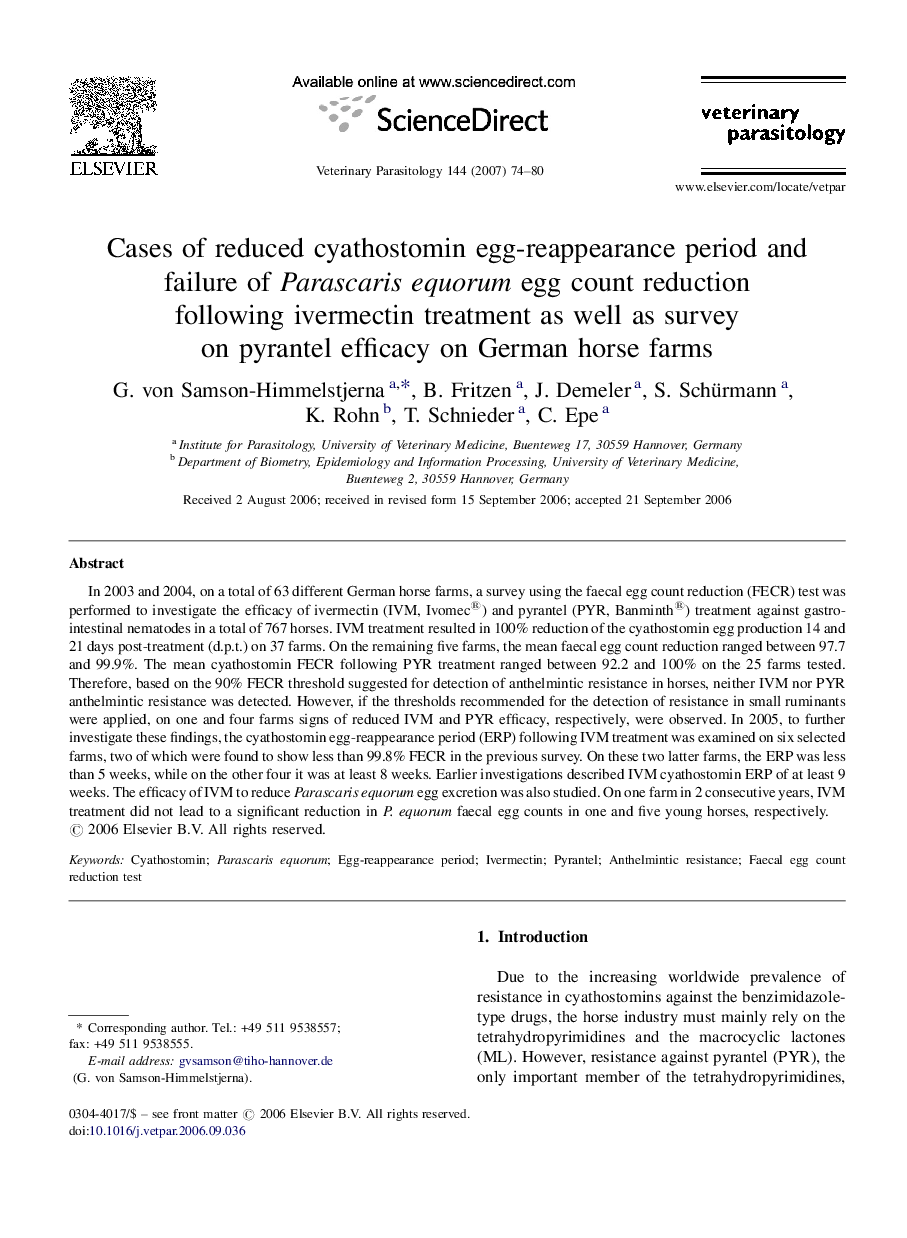| Article ID | Journal | Published Year | Pages | File Type |
|---|---|---|---|---|
| 2472180 | Veterinary Parasitology | 2007 | 7 Pages |
In 2003 and 2004, on a total of 63 different German horse farms, a survey using the faecal egg count reduction (FECR) test was performed to investigate the efficacy of ivermectin (IVM, Ivomec®) and pyrantel (PYR, Banminth®) treatment against gastro-intestinal nematodes in a total of 767 horses. IVM treatment resulted in 100% reduction of the cyathostomin egg production 14 and 21 days post-treatment (d.p.t.) on 37 farms. On the remaining five farms, the mean faecal egg count reduction ranged between 97.7 and 99.9%. The mean cyathostomin FECR following PYR treatment ranged between 92.2 and 100% on the 25 farms tested. Therefore, based on the 90% FECR threshold suggested for detection of anthelmintic resistance in horses, neither IVM nor PYR anthelmintic resistance was detected. However, if the thresholds recommended for the detection of resistance in small ruminants were applied, on one and four farms signs of reduced IVM and PYR efficacy, respectively, were observed. In 2005, to further investigate these findings, the cyathostomin egg-reappearance period (ERP) following IVM treatment was examined on six selected farms, two of which were found to show less than 99.8% FECR in the previous survey. On these two latter farms, the ERP was less than 5 weeks, while on the other four it was at least 8 weeks. Earlier investigations described IVM cyathostomin ERP of at least 9 weeks. The efficacy of IVM to reduce Parascaris equorum egg excretion was also studied. On one farm in 2 consecutive years, IVM treatment did not lead to a significant reduction in P. equorum faecal egg counts in one and five young horses, respectively.
